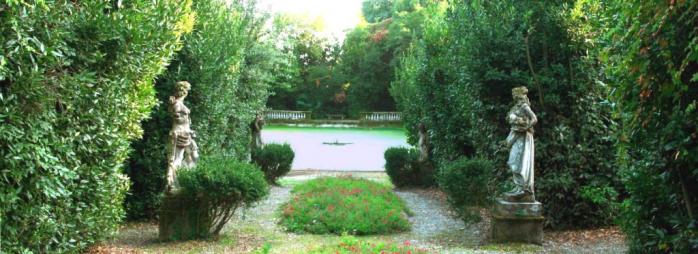Villa Mansi
THE VILLA MANSI, surrounded by exquisite gardens, is one of the most magnificent estates in Tuscany.
HISTORY. The 16th-century villa belonged to the Benedetti family before it was bought by the Countess Felice Cenami and her brother, Abbot Paolo Cenami. In 1675 the villa passed to the Mansi family.
 THE BUILDING. In 1634, Countess Felice Cenami commissioned architect Muzio Oddi of Urbino to remodel the villa in Mannerist style. The architect replaced the existing front façade with a more elaborate one and added a second story to the central part of the building. Most prominent are the eight statues, placed between Doric columns on the two upper levels.
THE BUILDING. In 1634, Countess Felice Cenami commissioned architect Muzio Oddi of Urbino to remodel the villa in Mannerist style. The architect replaced the existing front façade with a more elaborate one and added a second story to the central part of the building. Most prominent are the eight statues, placed between Doric columns on the two upper levels.In 1742, additional changes were made by the Mansi family. A balustrade, surmounted by statues, was placed around the roof area and a symmetrical double staircase, leading to the triple-arched portico, was added.
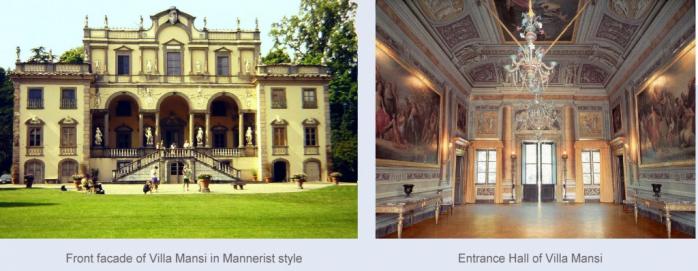 The interior of the villa is lavishly decorated with gilded ornaments, paintings and frescos from the neoclassical period. Amongst the many works of art are large canvases, painted by Stefano Tofanelli, which depict the Judgment of Midas and the Death of Marsyas. The impressive central hall gives access to rooms decorated with frescos of grotesques.
The interior of the villa is lavishly decorated with gilded ornaments, paintings and frescos from the neoclassical period. Amongst the many works of art are large canvases, painted by Stefano Tofanelli, which depict the Judgment of Midas and the Death of Marsyas. The impressive central hall gives access to rooms decorated with frescos of grotesques.
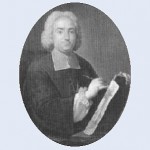 THE GARDENS. In the 18th century, when the villa belonged to the Mansi, the gardens were laid out in accordance with the design of the Baroque landscape designer and famous architect Filippo Juvara.
THE GARDENS. In the 18th century, when the villa belonged to the Mansi, the gardens were laid out in accordance with the design of the Baroque landscape designer and famous architect Filippo Juvara.
In the early 19th century, most of Juvara’s Baroque gardens were replaced by English style gardens with sloping lawn areas, winding paths and groves of trees in irregular paterns. During the second half of the 20th century, further modifications were introduced, including a new parterre garden, probably in an attempt to recreate some of park’s former glory.
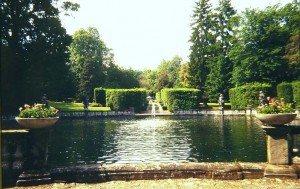 At present only a few features of Juvara’s design still exist. They include an alley bordered with high hedges of bay trees and statues of women who offer nature’s blessings (bowls with fruit and grain) to the passer-by. The alley opens onto a large fishpond, surrounded by a balustrade with potted geraniums and eight large statues of antique gods and goddesses.
At present only a few features of Juvara’s design still exist. They include an alley bordered with high hedges of bay trees and statues of women who offer nature’s blessings (bowls with fruit and grain) to the passer-by. The alley opens onto a large fishpond, surrounded by a balustrade with potted geraniums and eight large statues of antique gods and goddesses.
There is a legend that the ghost of the beautiful Lucida Mansi, who sold her soul to the devil to preserve her youth, sometimes appears near the fishpond at the full moon.
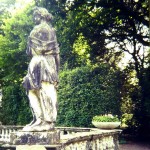 Other remnants of Juvara’s creation are a small, half-hidden ornamental pool and an artificial grotto, dedicated to the Goddess Diane.
Other remnants of Juvara’s creation are a small, half-hidden ornamental pool and an artificial grotto, dedicated to the Goddess Diane.
Address: Villa Mansi, Via delle Selvette, 242, 55012 Capannori Lucca, Italy. Phone 0583 920096
The villa and park can be visited during the following hours: Winter: 10.00-12.00 and 14.30-17.00; Summer: 9.30-12.oo and 15.00-19.00. Closed on Mondays.

